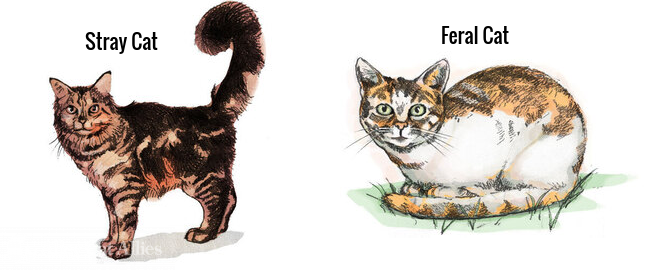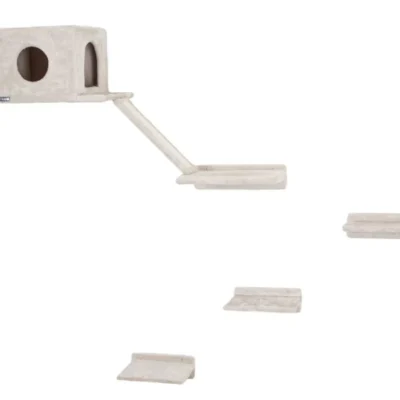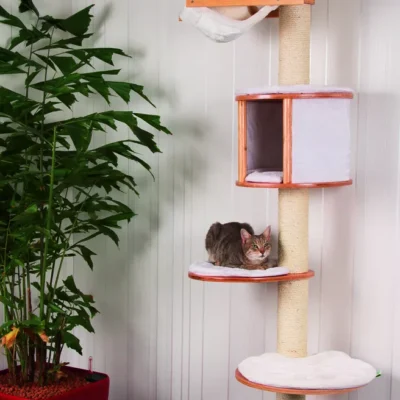0
The presence of stray cats in neighborhoods is a pervasive issue that poses a myriad of challenges. In this introduction, we will delve into the topic of stray cats and their prevalence in communities. It is crucial to distinguish between stray cats and feral cats.
Stray cats are those that were once domesticated or have had some interaction with humans, while feral cats are typically born and raised in the wild, with minimal or no human contact.
Stray cats face distinct challenges, such as finding food and shelter, as they often lack a stable home. Their presence in neighborhoods can have various consequences, including potential conflicts with residents and concerns about public health. Addressing the needs of stray cats is essential, as it not only impacts their well-being but also the overall harmony of the community. This section aims to provide a foundation for a comprehensive exploration of the complex issue of stray cats.
Helping stray cats can be a morally and ethically complex issue, leading to what we can call the “compassion conundrum.” In this section, we will delve into the ethical considerations surrounding stray cats. Questions arise, such as whether it is morally right to feed and provide shelter for stray cats.
Well-intentioned efforts to assist these animals can inadvertently have unintended consequences, including potential overpopulation and ecological disruptions. Readers will gain insight into the dilemmas faced by individuals who want to alleviate the suffering of stray cats while navigating the ethical challenges associated with their actions.
Despite the complexities involved, taking action to address the needs of stray cats is paramount for their well-being and for maintaining a harmonious community. In this section, we will highlight the significance of proactive efforts to help stray cats.
Providing them with essentials such as food, water, and shelter can substantially improve their lives and reduce their suffering. Moreover, we will emphasize the importance of spaying and neutering to control stray cat populations and prevent further expansion of the issue.
By addressing these challenges head-on and actively participating in community initiatives, readers can make a positive difference in the lives of stray cats. This section aims to motivate readers to consider taking action in their communities to address the stray cat dilemma responsibly and compassionately, thus contributing to a better environment for both humans and feline companions.
Assessing the Situation: Identifying and Interacting with Stray Cats
The initial step in addressing the stray cat dilemma is accurately identifying a truly stray cat as opposed to a lost or abandoned pet. In this section, we will provide readers with guidance on how to make this crucial distinction. Understanding the signs that may indicate a cat is a stray, such as unkempt fur and a wary demeanor, is essential.
Additionally, we will explore the significance of checking for identification, including collars or microchips, which can reveal if the cat has an owner. By offering practical tips on identifying stray cats, readers will be better prepared to assess the situation effectively and ethically.
Observing a stray cat’s behavior and condition is fundamental to understanding its needs. In this section, we will emphasize the importance of patience and careful observation when encountering a stray cat. We will delve into how a stray cat’s body language, such as tail posture and ear position, can offer valuable insights into its level of fear or comfort.
Assessing the cat’s physical condition, including signs of injury or illness, is equally vital. Readers will acquire valuable knowledge on how to observe and interpret a stray cat’s cues, enabling them to determine the most appropriate course of action.
Approaching a stray cat safely and without causing undue stress is a critical aspect of assessing the situation and providing potential assistance. In this section, we will offer readers practical guidance on how to interact with stray cats in a non-threatening manner.
Maintaining a calm and quiet demeanor, avoiding sudden movements, and allowing the cat to approach at its own pace are key principles. We will also discuss the use of food and treats as tools to build trust and facilitate interaction with the stray cat. By providing valuable tips on safe and respectful interaction, readers will be well-prepared to engage with stray cats in a way that minimizes stress for both the cat and themselves.
In conclusion, accurately identifying, observing, and interacting with stray cats are crucial steps in the process of addressing the stray cat dilemma. By following these guidelines, readers can ensure that their actions are informed and compassionate, ultimately contributing to the well-being of these animals and the broader community.
Providing Immediate Care and Shelter
One of the most immediate concerns for a hungry and thirsty stray cat is access to nourishment. In this section, we will emphasize the importance of providing sustenance to a cat in need. Malnutrition and dehydration can have detrimental effects on a stray cat’s health and overall well-being. It is crucial to understand the significance of offering appropriate food and clean water promptly.
We will provide guidance on selecting the right type of food for stray cats, including considerations for balanced nutrition. Readers will also learn about the importance of maintaining a consistent feeding schedule and appropriate portion sizes. By highlighting the critical role of food and water, readers will recognize the immediate relief these essentials can offer to a stray cat and contribute to their overall well-being.
Stray cats often lack proper shelter, exposing them to harsh weather conditions. In this section, we will explore various shelter options that can provide protection to a stray cat in need. We’ll discuss both simple makeshift shelters, such as insulated boxes or crates, and more permanent solutions like outdoor cat houses. Readers will gain insights into the materials and features that make a shelter suitable for stray cats, including insulation, cat bedding, and proper ventilation.
By offering practical advice on providing shelter, readers will be equipped to create a safe and comfortable haven for a stray cat, helping them endure challenging weather conditions.
While providing immediate care and shelter is essential, safety considerations are paramount—for both the cat and yourself. In this section, we will explain the importance of ensuring safety when interacting with a stray cat. We’ll discuss potential risks, such as scratches or bites, and provide guidance on how to minimize these risks through gentle and non-threatening approaches.
Readers will also gain an understanding of the importance of monitoring the cat’s behavior for signs of aggression or fear, enabling them to provide care in a responsible and secure manner.
In conclusion, providing immediate care and shelter to stray cats is an act of compassion that can significantly improve their well-being. By addressing their immediate needs for food, water, and shelter while ensuring safety considerations, readers can make a positive impact on the lives of these vulnerable animals.
Seeking Veterinary Care and Long-Term Solutions for Stray Cats
An essential step in aiding stray cats is seeking veterinary care to address potential health issues. In this section, we will underscore the importance of a veterinary check-up for stray cats. Stray cats often face various health concerns, including parasites, injuries, and diseases, stemming from their exposure to the elements and limited access to proper nutrition. Readers will gain insights into common health issues that stray cats may encounter and understand why professional veterinary care is crucial.
Additionally, we will provide guidance on how to safely transport a stray cat to a veterinarian, ensuring the cat’s comfort and safety throughout the process. Discussing the benefits of vaccinations and preventive treatments, readers will recognize the significant role that veterinary care plays in improving the well-being of stray cats and ensuring their long-term health.
A fundamental long-term solution to the stray cat dilemma is preventing the population from growing. In this section, we will delve into the importance of spaying and neutering stray cats. These procedures not only control the population but also offer health benefits and reduce certain behaviors, making them a crucial part of stray cat management.
Readers will learn about the availability of low-cost spay/neuter programs and clinics, making these services accessible to caregivers who are committed to addressing the stray cat issue responsibly. By promoting spaying and neutering, readers will understand how it plays a pivotal role in curbing the stray cat population and ensuring a healthier and more sustainable future for these animals.
For some stray cats, finding a permanent home may be the most desirable solution. In this section, we will explore options for finding a suitable home for a stray cat. Readers will discover the possibility of adoption by compassionate individuals or families, offering stray cats a chance for a better life in a loving environment.
Furthermore, we will highlight the significant role of rescue organizations and shelters in rehoming stray cats. Readers will gain insights into how these organizations work and how they can be valuable partners in finding permanent homes for stray cats. We will also provide tips on creating appealing adoption profiles for stray cats, increasing their chances of finding a loving and caring family.
By discussing these options, readers will be informed about various avenues to pursue when it comes to finding a permanent home for a stray cat they have helped. This section aims to empower caregivers and advocates to make positive changes in the lives of stray cats by seeking long-term solutions that offer them security and happiness.



























































